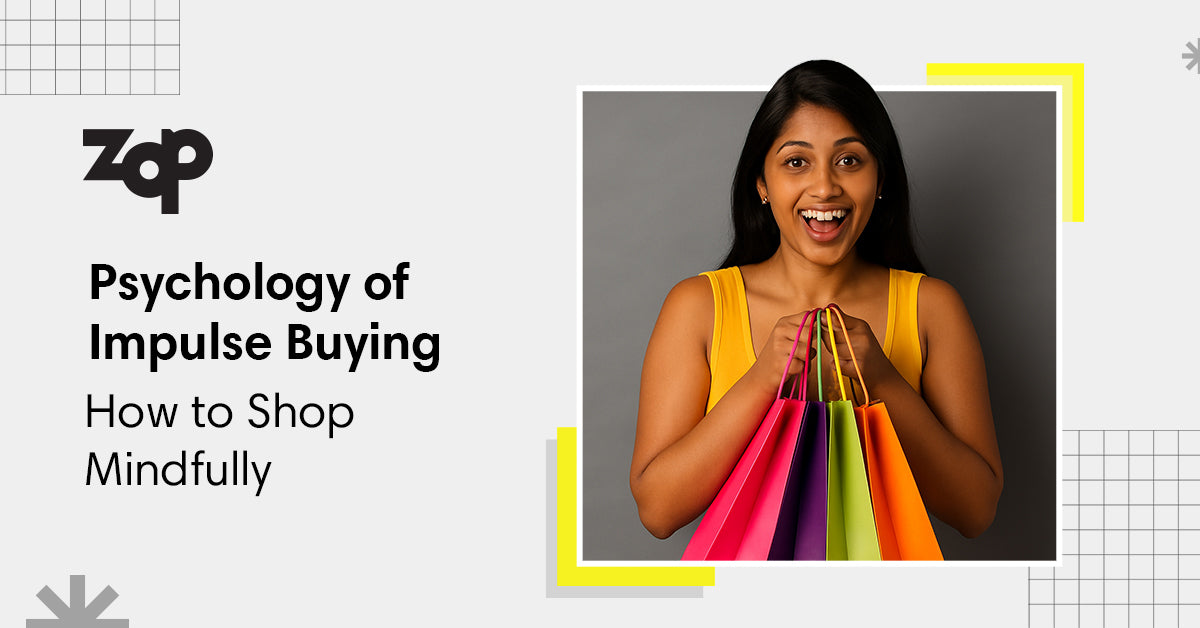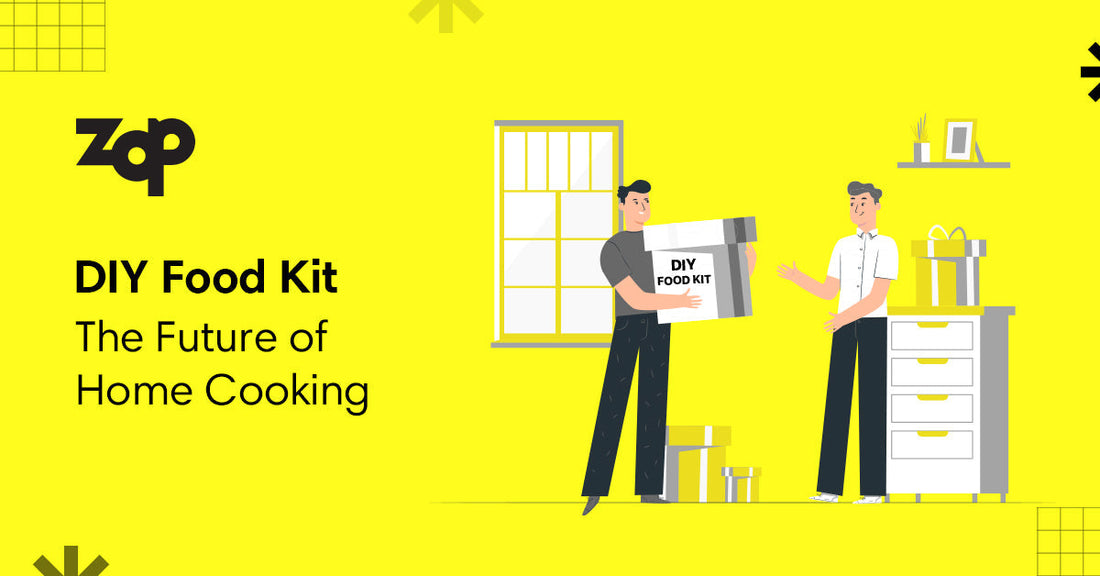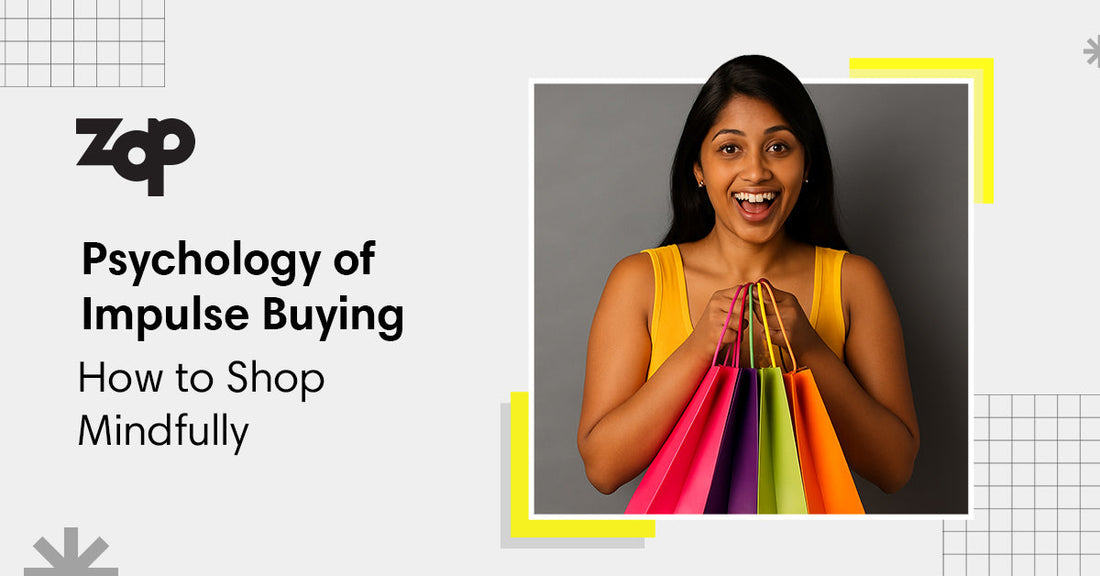Ever added something to your cart simply because it felt too good to resist? If your answer is yes, then you have been a victim of impulse buying.
In today's day and age, it has become very easy to satisfy your needs in the blink of an eye. This has made impulse shopping easier than ever.
Before we get into the psychology of it all, let's understand what impulse buying actually means.
What is Impulse Buying
Impulse buying refers to the instant, spontaneous purchases you make without having any actual intent to make them.
Impulse shopping usually happens when brands tap you into your emotions - through flash sales, limited-time offers and whatnot. They push you to give into your impulses and buy more than you need.
Why Impulse Buying Happens More Than We Think
The whole point of impulse shopping is to get consumers to buy mindlessly, without having any real need for something.
Brands are aware of this, and hence design their websites and products in a way that encourages impulsive buying.
Lots of businesses employ and invest in psychological tactics to get consumers to buy more. Let's take a look at what they are.
The Psychology Behind Impulse Shopping
When we shop impulsively, we stop thinking logically. Our emotions play a huge role in impulse buying, emotions like excitement, stress, boredom and even sadness.
Here are a few psychological factors that lead to impulse shopping -
1. Instant Satisfaction
Impulse buying gives you a feeling of instant reward. This gives consumers a dopamine rush.
2. Fear of Missing Out (FOMO)
Offers that only last a limited time give people a sort of urgency, making them buy things instantly.
3. Peer Influence
A lot of times, people feel heavily influenced by their social circle and their purchases. They end up giving into impulsive buying to fit in.
4. Coping mechanism
Some people use impulsive shopping to cope with difficult emotions such as sadness, anger and stress.
What Actually Leads to Impulse Buying
Apart from all the psychological factors, businesses and brands also employ certain techniques to keep consumers around.
1. Online Algorithms
Websites usually have a ‘trending’ or 'recommended’ section that attracts consumers. These sections have products based on consumer searches and preferences.
2. Retail Store Environments
Physical stores make use of lighting, strategic product placement, design and even music to encourage impulse shopping.
3. Sales and Discounts
Sales and discounts, such as flash sales and buy one get one offers, are often misleading and are used to attract consumers the most.
The Hidden Costs of Impulse Shopping
In the heat of the moment, making mindless purchases feels very rewarding. But this moment is followed by various mixed feelings.
1. Buyer’s remorse
Impulse shopping can often lead to feeling regret after making your purchases.
2. Clutter and chaos
Too much mindless shopping means more and more accumulation of useless products in your living space.
3. Disturbance in savings
Sometimes, impulsive buying can take over you to a point that it starts messing with your savings and finances.
Tips to Shop More Mindfully and Break the Habit Over Time
If you are someone who has gone through the ordeal of impulse shopping, you know how hard it is to stop.
Here are some tips to hold yourself back from going down an impulse buying rabbit hole.
1. Shopping Lists
Make shopping lists at the beginning of your shopping spree to make sure you're only buying exactly what you need.
2. 24 Hour Rule
Right when you are about to impulsively buy something, pause and wait for 24 hours. This will give you time to think your purchase through.
3. Make a Budget
Create a financial budget for yourself every month or week to control impulse buying.
4. Use Cash
Carrying and using cash helps you see how much money is actually being spent.
5. Track your spending
Keep a record of how much money you spend and where you spend it, especially the money spent on non-essential goods.
6. Identify triggers
Learn about the different types of physical and emotional triggers that lead you to impulsively shop for things.
Shop intentionally, not emotionally
Impulse shopping doesn't mean lacking discipline. It means being driven by emotions and feelings. All this is further promoted by clever marketing tactics.
Awareness is the first step to change. Once you know what triggers your impulse buying, you can take control of it easily.
So the next time you're shopping, pause and reflect before buying something. You don't have to buy less, you just have to buy better and feel good with every purchase.
FAQs
1. What is the difference between impulse and regular shopping?
Regular shopping mostly includes buying stuff that you actually need as opposed to impulse shopping where you buy things fueled by emotions.
2. How can I stop impulse buying online?
Do not save your credit or debit card details online, block shopping websites that you visit frequently and follow the 24 hour rule.
3. Do I need psychological help if I am an impulse buyer?
No. Impulse shopping is a part of human nature. We all fall victim to this trap. It can be easily controlled by being a little mindful.
4. Can I become financially weak because of impulse buying?
Although a little mindless shopping doesn't hurt anyone, excessive mindless shopping might hurt your bank account.












